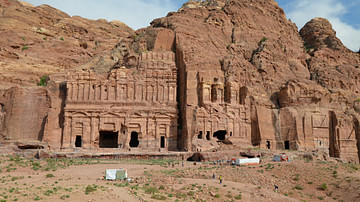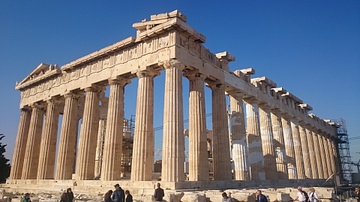Information and communication technologies (ICT) are revolutionizing the ways in which the public interacts, understands, and appreciates the importance of cultural heritage around the world. They are additionally enabling sustainable tourism to flourish in an era of unprecedented globalization. In this interview, James Blake Wiener of Ancient History Encyclopedia speaks to Professor Lorenzo Cantoni - the chair holder of the UNESCO Chair in ICT at the Università della Svizzera italiana to develop and promote sustainable tourism in World Heritage Sites - about the ways in which ICT is altering how we see the past and travel around the world.

JBW: Professor Cantoni, I bid you a warm welcome to Ancient History Encyclopedia (AHE). Please tell us more about UNESCO's ICT Chair at USI – Università della Svizzera italiana in Lugano, Switzerland. When was it established and what are its general aims? How did you become involved in the Chair's genesis?
LC: I am really happy we can have this conversation!
The UNESCO Chair in ICT to develop and promote sustainable tourism in World Heritage Sites has been established at USI in 2013. But the process started earlier, with the preparation of the application dossier, its evaluation and approval by UNESCO, up to the agreement between UNESCO and USI university. I have been involved since the very beginning, together with several young colleagues and with the assistance of the Swiss Commission for UNESCO. We believed that the extensive experience we got throughout the years doing research and development in three related areas – eTourism, eLearning, and ICT4D (ICT for Sustainable Development) – could be of interest for UNESCO enlisted World Heritage Sites. Hence the proposed Chair, whose goals are to conduct extensive research and development activities in the field, as well as to do training and to promote knowledge sharing among relevant stakeholders.
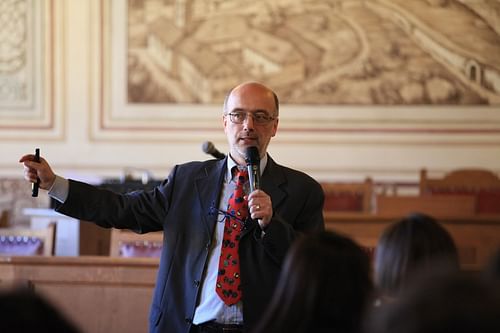
JBW: What are the specific programs and initiatives that the ICT Chair is currently overseeing? Could you also share with our audience some further details about the 2018 Summer School of the UNESCO chair in ICT, which will be held at the University of Turku, in Finland?
LC: At the UNESCO Chair in USI we do research and development activities, involving Master and PhD students from USI, as well as several visiting scholars who join us from all over the world.
Several educational and training activities are also organized: regular courses at USI's Master in International Tourism and a Summer School organized every year in a different place. In 2018 we have partnered with the University of Turku, in Finland, to run a very innovative travelling Summer School: we will visit five World Heritage Sites and two UNESCO Biosphere Reserves in the southern part of Finland, co-creating with local stakeholders technical solutions in line with our mission: to orchestrate ICT in order to support and promote sustainable tourism in World Heritage Sites (we are still accepting late applications and it is possible also to participate online).
Besides face to face training activities, we are leveraging on ICT to offer online training. In particular, we have launched the first ever MOOC – Massive Open Online Course – titled “eTourism: Communication Perspectives” (with more than 8,000 learners), and recently, as part of the activities of the UNESCO-UNITWIN Network “Culture, Tourism, and Development”, led by Paris 1 Panthéon-Sorbonne University, the MOOC “Tourism Management of UNESCO World Heritage Sites”. This MOOC will remain open until the end of 2018 and has attracted so far about 5,000 learners from 159 countries.
JBW: What is “sustainable tourism” and how can it improve the public's awareness and understanding of cultural heritage, Professor Cantoni?
LC: The term “sustainable” suggests that something should be kept available not only for our generation but also for the future ones – this is the very meaning of its French equivalent: “durable” – something that lasts.
If we think of Tourism and Heritage, we can refer to three areas of sustainability: environmental, economic, and socio-cultural.
Environmental/ecological sustainability refers to the fact that tourists should not damage the natural resources. They should avoid behaviors that create excessive pollution or irreversible damage to the biodiversity. In some critical areas, in order not to exceed the carrying capacity of a place, quotas might be applied.
Economic sustainability refers to the fact that tourism players, and in general the local populations, should be able to make a reasonable profit out of the tourism-related activities. In general, we know that most of the tourism/hospitality enterprises are micro, small, and medium ones, frequently small family businesses. They are very resilient and tend to look after the place and its correct management also for the future generations. Companies focused only on making huge profits might be less sustainable and might start and end activities only based on short-term fluctuations, or be less interested in sharing the profits with workers and the community at large. For instance, a company might build and operate a hotel, and then leave the building empty as soon as the business becomes not profitable, or less profitable than in other places.
Socio-cultural sustainability refers to the fact that tourism is, by nature, based on hosting people from outside a community – be they from the same country (domestic tourism), or from other countries (international tourism). It is very important that visitors do not damage the quality of life of locals, nor their lifestyles and peculiar traditions. We have studied, for instance, the case of Lalibela, a World Heritage Site in Ethiopia. It consists of eleven medieval monolithic cave churches of the 13th century CE, still actively used as places of worship by Christian Copts. Tourists cannot, and should not disturb or disrupt the life of the monks and of the local communities living there and looking after such property. In fact, what we look for in cultural tourism – and in tourism in general – is authentic experiences: if tourism destroys or deeply alters life at a destination, what remains is a kind of “fake copy”, something we usually refer to as “Disneyfication”.
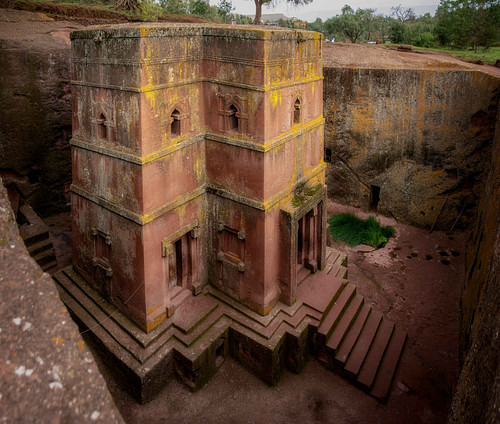
Analogous situations can be found in places experiencing the so-called “overtourism”. Their tourists do not bring the usual economic and social benefits any longer; on the contrary, they put the very quality of locals' life at risk.
JBW: In your own words, how do media, technology, tourism, and cultural heritage intersect? Which technologies do you believe will play a commanding role in safeguarding cultural heritage and promoting sustainable tourism in the future?
LC: In the UNESCO Chair in Lugano we have proposed the “ABCDE” framework, which refers to five main areas of relevance: Access, Better, Connect, Dis-intermediate, and Educate.
- Access: ICT can offer endless opportunities to provide good quality information about heritage sites, through websites, videos, social media, mobile apps, and the like. Definitely, AHE is a major player in this area, providing extensive information about so many places and their historical relevance.
- Better: once the travelers reach the destination, they can make the best of it thanks to mobile apps (so-called Location Based Services), augmented reality, gamification applications, etc. For instance, when it comes to archeological sites, augmented reality can help the visitor to better understand how the place might have looked like. But it can also be used to recognize trees and animals or to better interpret paintings in a museum, just to mention some other applications.
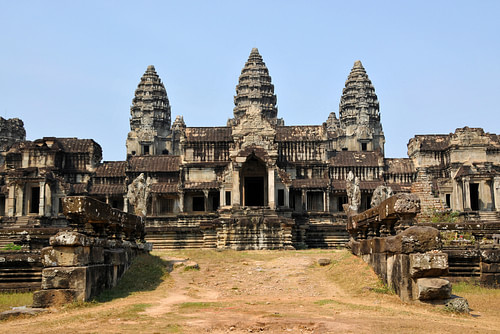 Angkor Wat, Cambodia
Angkor Wat, Cambodia - Connect: ICT can help to connect the three main players in this relationship: locals, visitors, and the heritage itself. For instance, we assisted RETOSA, the Regional Tourism Organisation of Southern Africa, developing an offline/online digital game to help the young generations to know more about the World Heritage Sites of the 15 countries of the Southern African Development Community (SADC) and to reflect on how sustainable tourism might be a major component of local development. Nowadays such a tool has become an app everyone can use. In fact, for the first time ever, the United Nations named 2017 as the International Year of Sustainable Tourism for Development. We should think of ICT not only as tools to spread voices, to speak aloud, but also – I would say: first of all – as tools to listen to what travelers are sharing about their experience at a destination. ICT enables us to have much deeper insights into travelers' experiences, expectations, satisfaction (or not). We are then in a better position to improve or redesign touristic offers.
- Dis-intermediate: as I mentioned above, in order to be sustainable, tourism should bring a reasonable profit to the local communities. In some regions of the Global South, there is a risk that international visitors pay most of their travel money to travel operators located outside of the destination country. Thanks to ICT, some relationships between prospect travelers and players at the destination can be dis-intermediated so that the destination itself benefits from most of the money spent. For instance, we partnered with local players in the Island of Mozambique – a World Heritage Site – to develop their online presence: a super simple website listing local B&Bs and their telephone numbers. After a few years, more than 60% of the bookings to such B&Bs are done directly and not through external tour operators/travel agents.
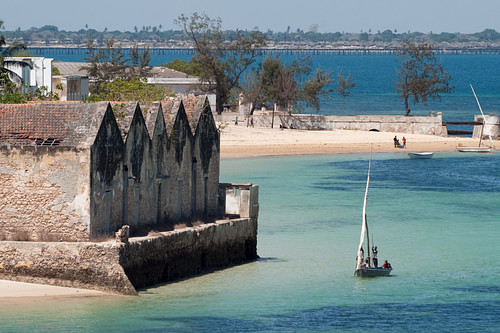 Island of Mozambique
Island of Mozambique - Educate: ICT can also be used to help tourism players to learn and upskill, especially in such a fast-moving context. In fact, due to the very nature of hospitality and tourism, many operators cannot afford to attend regular courses, hence the need for more flexible learning offers. Here, free online courses like the MOOC I already mentioned above can make the difference.
JBW: Could you share further information about the #faces4heritage campaign? How and when was this initiative started, and what are its aims? I believe that the #faces4heritage campaign has been active for several years if I am not mistaken.
LC: Right, happy to share something about this initiative. In 2015, UNESCO launched the global #Unite4Heritage campaign, aimed at raising awareness about the destruction of heritage done by violent extremists, e.g. in Syria and Iraq, but also in Lybia, Mali, and elsewhere. At the chair, we wanted to support such a campaign and developed #faces4heritage, an online tool that enables you to combine half of your face with half of the face of a destroyed statue. The created image can then be used as your profile picture on social media so that your friends/followers are invited to reflect on such a dramatic issue. #faces4heritage has been and is still very active on Twitter, being among the most used hashtags in combination with #Unite4Heritage.
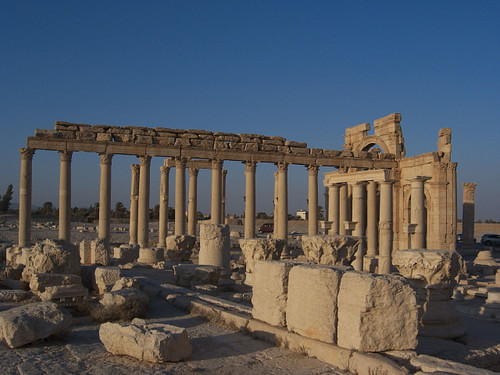
JBW: Professor Cantoni, how can the average citizen become more involved in the processes of preservation and valorization with regard to cultural heritage? Do you have any specific recommendations or personal suggestions?
LC: Just a couple of recommendations and a further reflection. First of all, I would definitely recommend to prepare yourself before the trip; AHE and other resources will definitely help. Additionally, try to have meaningful interactions with local people and to buy/use local products as much as possible. In general, invest more in quality than in quantity: visiting a place should not be just aimed at adding it to our “visited list” but to deeply understand its nature, history, and culture.

Readers of AHE might find it useful to reflect on the very origin of the word 'culture', which comes from the ancient Latin Language. Its root is the verb 'colo', meaning 'look after', 'care'. It had three main areas of application.
The first one is looking after our natural environment: 'agriculture' (which means cultivating the fields). While visiting a place we should pay attention to the way locals interact with their environment, including their local ingredients and cuisine.
The second one is cultivating ourselves as human beings: what we usually refer to as 'culture'. Think of the way we inhabit places from architecture and urban planning to the way we dress and behave, the schooling systems, all visual and performative arts, socio-political systems, and so on. By the way, thinking of Latin again, 'habitus' coming from the verb 'habeo' (to have) is closely connected with living places ('habitare': living), fashion and costumes ('habitus': garment), as well as ways of living ('habitus': habit).
The third area is the way we cultivate our relationship with God: 'cult', religion.
All of those dimensions should be considered by a responsible and sustainable traveler. A well-traveled person, I would say.
JBW: Professor Cantoni, I thank you so much for your time and consideration. I can speak on behalf of all my colleagues at AHE and say that we are looking forward to cementing a proactive and vigorous relationship with you and everyone associated with UNESCO's ICT Chair at the Università della Svizzera italiana.
LC: I am also very much looking forward to a fruitful collaboration with AHE and its community!
Ancient History Encyclopedia is delighted to announce that the publication of this interview coincides with the formation of a new partnership with the UNESCO Chair in ICT at the Università della Svizzera italiana to develop and promote sustainable tourism in World Heritage Sites.

Dr. Lorenzo Cantoni graduated in Philosophy and holds a PhD in Education and Linguistics. He is a full professor at USI - Università della Svizzera italiana (Lugano, Switzerland), Faculty of Communication Sciences, where he is director of the Institute for Communication Technologies. Lorenzo Cantoni is scientific director of the laboratories webatelier.net, NewMinE Lab: New Media in Education Lab, and eLab: eLearning Lab. His research interests are where communication, education, and new media overlap, ranging from computer-mediated communication to usability, from eLearning to eTourism and digital Fashion, from ICT4D to eGovernment. He is chair holder of the UNESCO chair in ICT to develop and promote sustainable tourism in World Heritage Sites, established at USI in 2013. Dr. Lorenzo Cantoni has been Dean of the Faculty (2010-2014) and President of IFITT - International Federation for IT in Travel and Tourism (2014 - January 2018). At USI, he is director of the Master in Digital Fashion Communication, done in collaboration with the Université Paris 1 Panthéon-Sorbonne, and member of the board of the Master in International Tourism. His personal twitter account: @lorenzocantoni.



